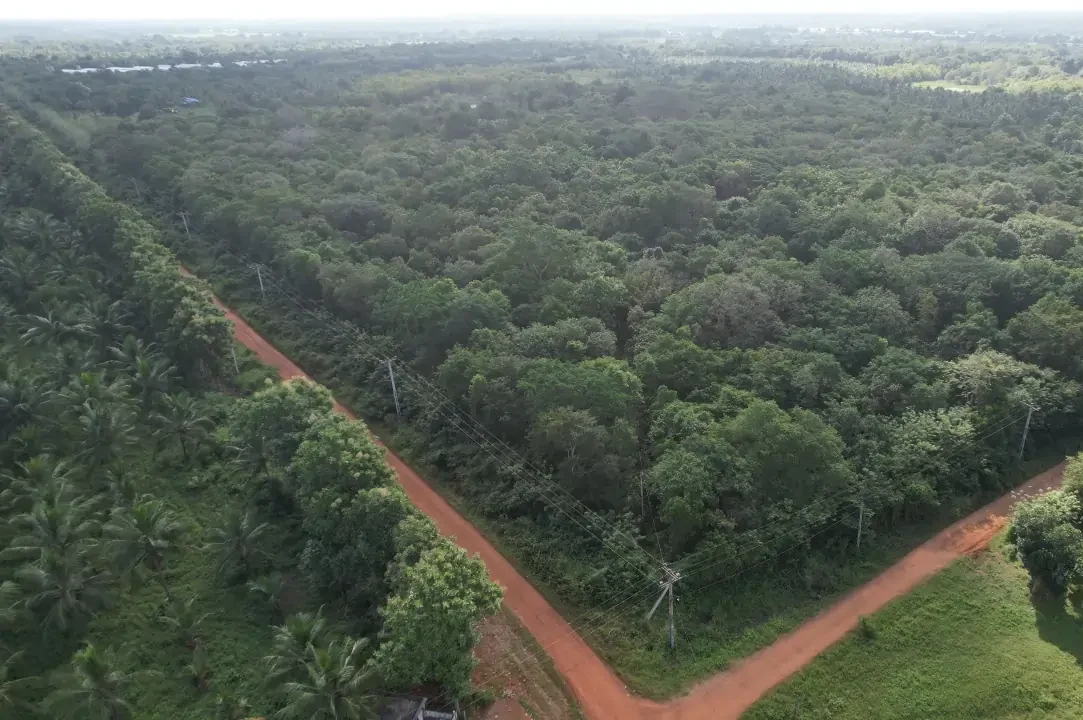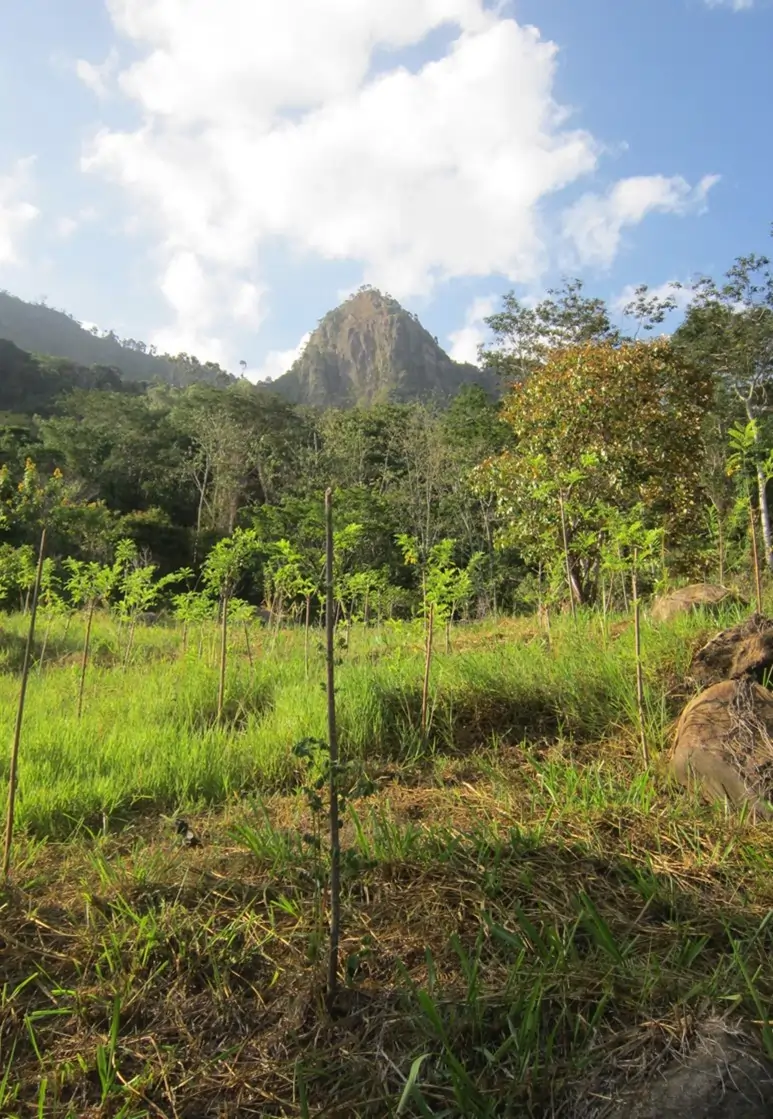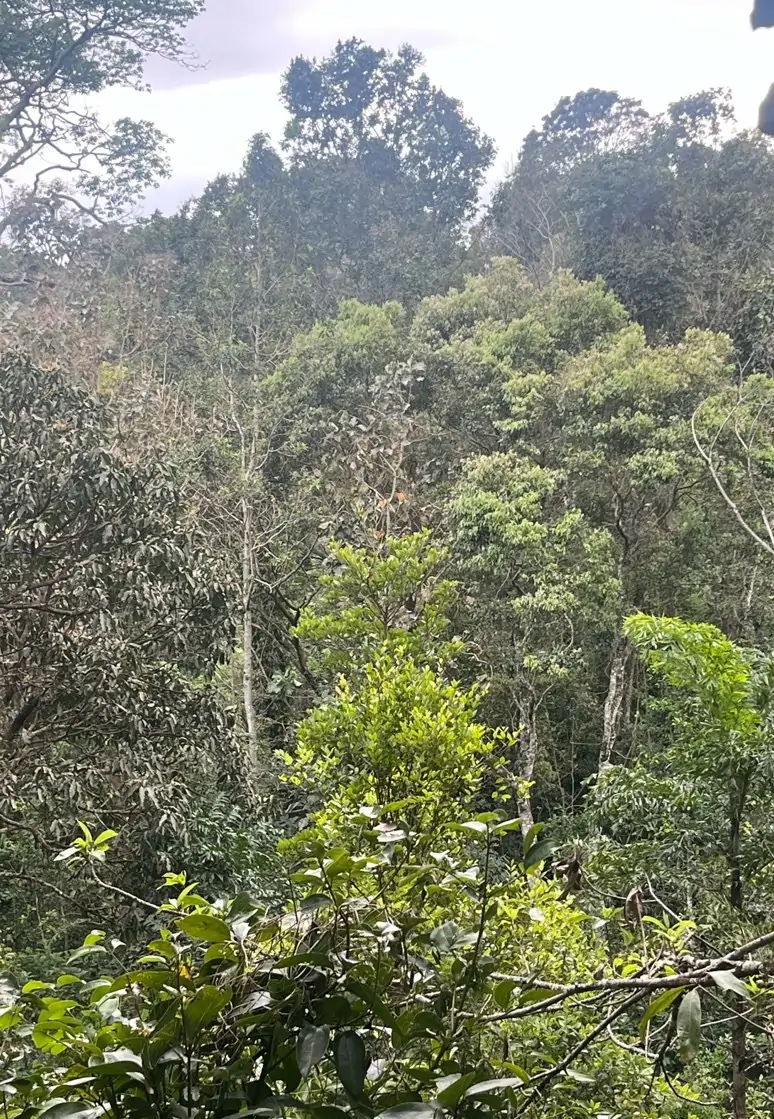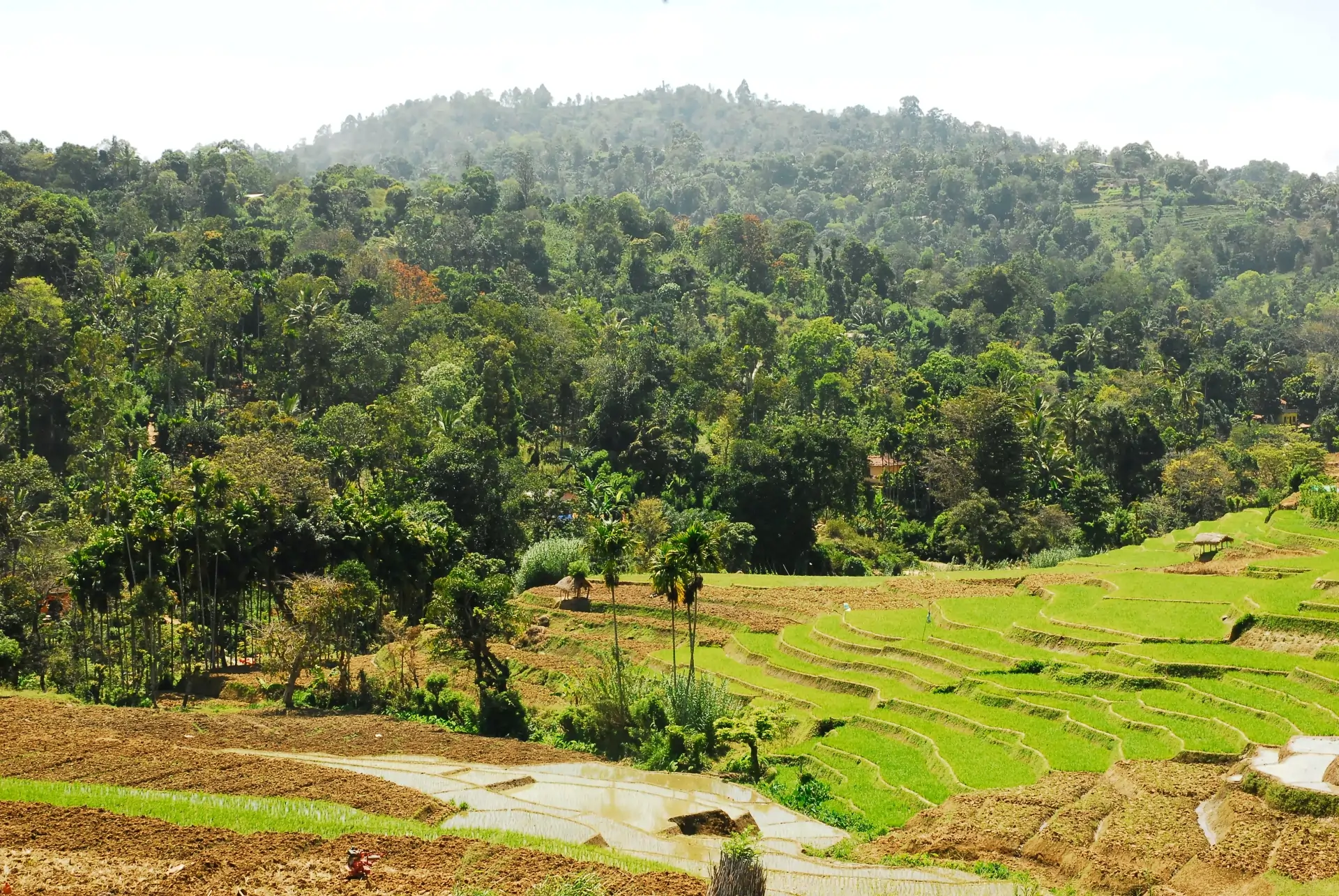
Since 1982, the Neo Synthesis Research Center (NSRC) has rehabilitated forests in watersheds and worked with farmers to enhance their livelihoods and food security using regenerative agriculture and agroforestry.
We integrate traditional knowledge, experience and the sciences in our research and training, and lend support to fledgling environmental, agricultural and conservation organizations.
We have numerous on the ground examples of forest rehabilitation that are 6 months to 25 years old. Our two research stations are located in the Intermediate Zones of Sri Lanka.
Research Stations
Serukele


Located in the Puttalam District, the Serukele rehabilitation model was once a degraded coconut estate. Diverse methods used here include riparian restoration for water management, analog and conservation forestry for forest rehabilitation and habitat recreation, and regenerative agriculture of traditional paddy varieties, vegetables, and fruits for food security.
Twenty years later, this rehabilitation model demonstrates resilience to drought because: vegetation cover has attained ~ 60% canopy closure, shade prevails, soils are chocolate-coloured, carbon-rich and hold moisture; several small reservoirs (wewas) hold water and enrich the ground water table; and the land provides habitat to several species of terrestrial and aquatic fauna.
Lemastota



Cloud and submontane forests are being rehabilitated at a degraded tea estate in Lemastota, a landslide prone area in the Badulla District.
Land rehabilitation in the headwaters of the Lemastota Oya includes conservation forestry in the upper reaches and in riparian zones of all dry gullies. Analog forestry (using pepper, coffee, and cinnamon as principal crops), and vegetable and tea cultivation dominate in downstream areas. All crops are grown using regenerative agricultural methods.
Twenty years after rehabilitation, dry season water flow has increased in streams, and soil fertility is enhanced through the accumulation of above and below-ground carbon. Habitat has been recreated for biodiversity, and extensive root mats created in sub soils by new forest vegetation may biologically mitigate landslides.
